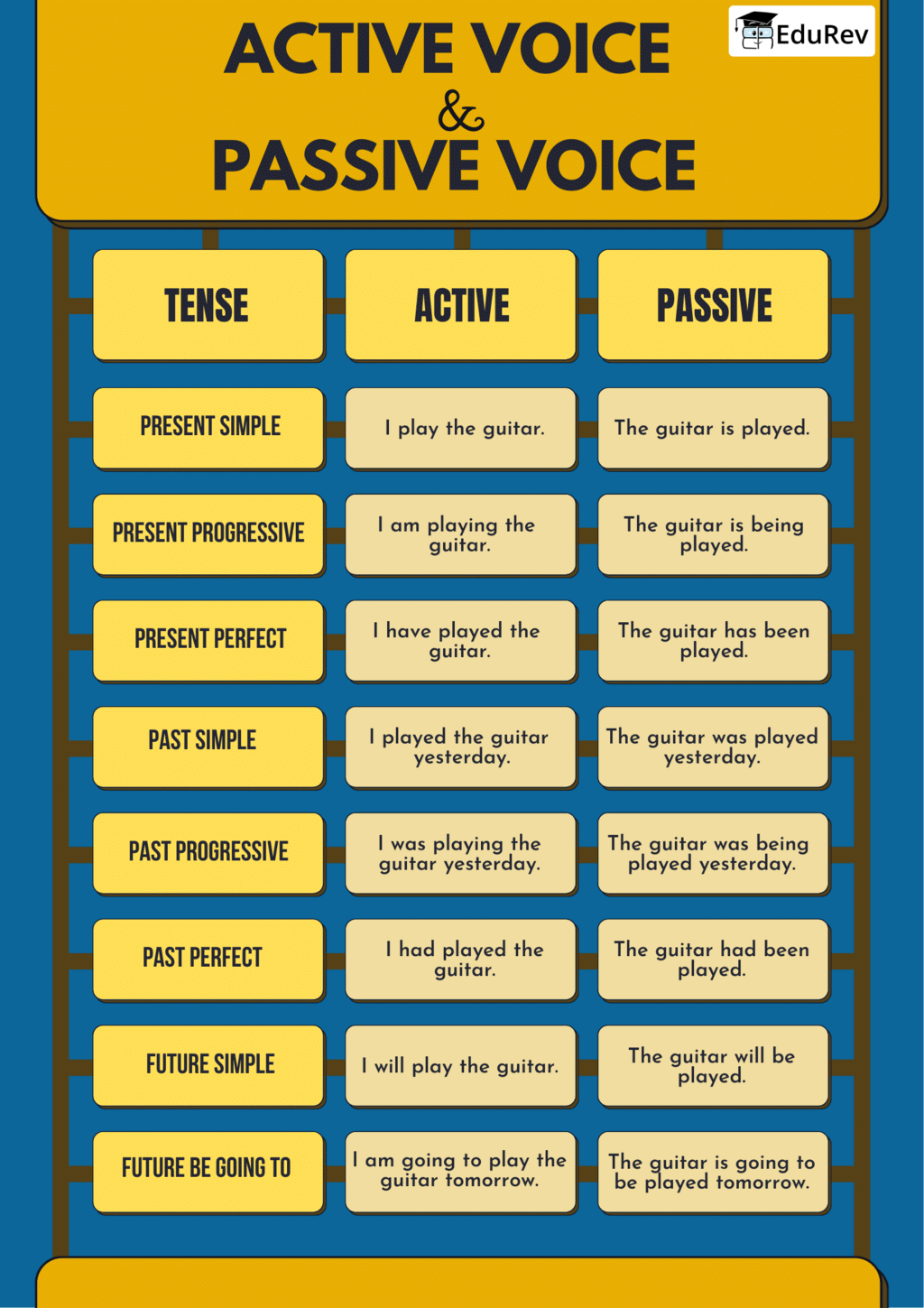Class 10 Exam > Class 10 Notes > English Grammar Advanced > Infographic: Active-Passive Voice
Infographic: Active-Passive Voice | English Grammar Advanced - Class 10 PDF Download

The document Infographic: Active-Passive Voice | English Grammar Advanced - Class 10 is a part of the Class 10 Course English Grammar Advanced.
All you need of Class 10 at this link: Class 10
|
55 videos|297 docs|40 tests
|
FAQs on Infographic: Active-Passive Voice - English Grammar Advanced - Class 10
| 1. What is the difference between active and passive voice? |  |
Ans.Active voice emphasizes the subject performing the action, while passive voice highlights the action itself and the recipient of the action. In active voice, the subject comes first (e.g., "The cat chased the mouse"), whereas in passive voice, the subject is acted upon (e.g., "The mouse was chased by the cat").
| 2. How can I identify active and passive voice in a sentence? |  |
Ans.To identify the voice, look for the subject and the verb. In active voice, the subject performs the action (subject-verb-object structure). In passive voice, the action is performed on the subject (object-verb-subject structure), often using forms of "to be" and a past participle (e.g., "is chased").
| 3. Why is it important to use active voice in writing? |  |
Ans.Active voice makes writing clearer and more engaging. It usually results in stronger, more direct sentences that are easier for readers to understand. Using active voice can also help convey a sense of urgency and action, which is often more compelling.
| 4. Are there situations where passive voice is preferred? |  |
Ans.Yes, passive voice can be useful when the focus should be on the action or the recipient of the action rather than the doer. It is often used in scientific writing, formal reports, and when the doer is unknown or irrelevant (e.g., "The results were analyzed").
| 5. How can I convert a sentence from passive to active voice? |  |
Ans.To convert a sentence from passive to active voice, identify the subject that performs the action, rephrase the sentence to place this subject at the beginning, and adjust the verb accordingly. For example, "The book was read by Mary" can be changed to "Mary read the book."
Related Searches
















